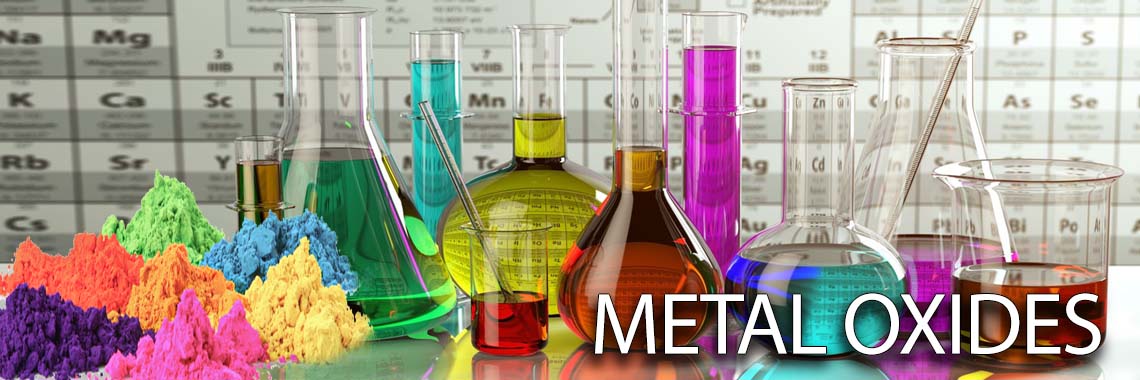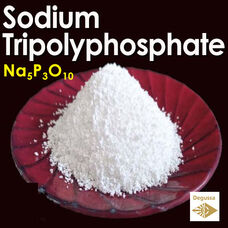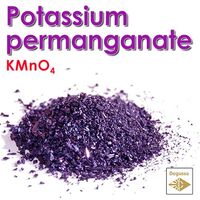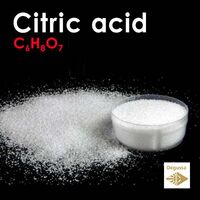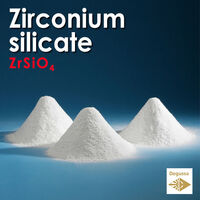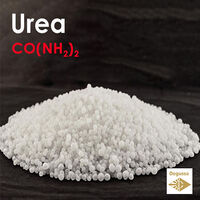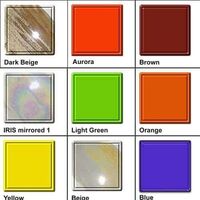Sodium tripolyphosphate - The Advantages in the Manufacture of Ceramics
Na5P3O10
Sodium triphosphate (STP), also sodium tripolyphosphate (STPP), or tripolyphosphate (TPP)) is an inorganic compound with formula Na5P3O10. It is the sodium salt of the polyphosphate penta-anion, which is the conjugate base of triphosphoric acid. It is produced on a large scale as a component of many domestic and industrial products, especially detergents. Environmental problems associated with eutrophication are attributed to its widespread use.
Detergents
The majority of STPP is consumed as a component of commercial detergents. It serves as a "builder," industrial jargon for a water softener. In hard water (water that contains high concentrations of Mg2+ and Ca2+), detergents are deactivated. Being a highly charged chelating agent, TPP5− binds to dications tightly and prevents them from interfering with the sulfonate detergent.
Food
STPP is a preservative for seafood, meats, poultry, and animal feeds. It is common in food production as E number E451. In foods, STPP is used as an emulsifier and to retain moisture.
Other
Other uses (hundreds of thousands of tons/year) include ceramics (decrease the viscosity of glazes up to a certain limit), leather tanning (as masking agent and synthetic tanning agent - SYNTAN), anticaking agents, setting retarders, flame retardants, paper, anticorrosion pigments, textiles, rubber manufacture, fermentation, antifreeze." TPP is used as a polyanion crosslinker in polysaccharide-based drug delivery. Toothpaste
The Advantages of STPP in the Manufacture of Ceramics
The primary use of STPP in ceramic production is through its ability to lower the viscosity of a mass or slurry and in doing so improve the fluidity of a desired material. This can reduce costs, as any reduction in water content helps to lower energy consumption in a ball mill or spray drying tower (spray column). The manufacture of ceramics requires more know-how, hard work, and quality raw materials than many people understand. One of the most worthwhile raw materials in ceramic production is sodium tripolyphosphate. Also known as STPP, sodium tripolyphosphate is an organic compound which is ideal for decreasing the viscosity of glazes, chelating hard metal ions, and also has an excellent degumming effect in ceramic production. It is typically supplied as a white powder or granular product which must be kept dry in a well-ventilated place, away from extremes of heat and cold. STPP can be used to adjust the density of a glaze slurry to prevent excessive dripping and limit foaming. STPP can be used to change a glaze's rheological properties to limit the emergence of blowholes, pinholes, bumps, and other defects. However, as well as quicker drying, there are other ways that using sodium tripolyphosphate as an additive in ceramic glazes can improve results in ceramic products. These include:
1. STPP can be used to adjust the density of a glaze slurry to prevent excessive dripping and limit foaming.
2. STPP can be used to change a glaze’s rheological properties to limit the emergence of blowholes, pinholes, bumps, and other defects.
3. STPP can also control thixotropy, and therefore reduce deglazing issues.
4. STPP can help to ensure an even application of a glaze, and so limit the formation of unwanted stripes or patches.
5. STPP can be especially beneficial when forming high-quality marble patterns on ceramics, as an additional application on the sieve (wire mesh) can prevent a pattern from blurring after glazing.
6. STPP can improve the efficiency of glaze applications, speed up glaze applications, and therefore, lower production costs.
Additionally, in some circumstances, it can also be employed as a low-cost plasticizer.
Industrial ceramic producers are all too aware of the importance of rheology, setting times, and glaze efficiency, whether it is for the manufacture of crockery, sanitary products, tiling, or an individual industrial product, such as the insulators on power cables and pylons. Modern standards and increased expectation on a ceramic’s performance mean that any defect on a glaze can make a product unsellable.
More about Sodium triphosphate in Wikipedia
Formula: Na5P3O10
Molar mass: 367.864 g/mol
Form: white powder
CAS Number: 7758-29-4
Density: 2.52 g/cm³
Synonyms: Sodium tripolyphosphate, Pentasodium triphosphate, Sodium triphosphate, Thermphos, Triphosphoric acid, sodium salt (1:5), Armofos, Polygon, Tripoly, Rhodiaphos LV, Thermphos N, Empiphos stp-D, Caswell No. 799
Overall, sodium tripolyphosphate (STPP) is an excellent dispersing agent for use in industrial ceramic production.
- Brand: Degussa
- Product Code: Oxide - Sodium tripolyphosphate - Na5P3O10
- SKU: Na5P3O10
- Availability: 567
-
0.59€
Available Options
Related Products
Potassium permanganate
KMnO4 Potassium permanganate (KMnO4) is a chemical compound consisting of potassium (K), manganese (Mn), and oxygen..
0.99€
Citric Acid - The Best Acidity Regulator in Ceramics
C6H8O7 Citric acid exists in a variety of fruits and vegetables, most notably citrus fruits. Lemons and limes have ..
0.59€
Zirconium silicate - White Pigment Zirconite Zircon Hyacinth Zircosil Excelopax
ZrSiO4 Zirconium silicate, also zirconium orthosilicate, ZrSiO4, is a chemical compound, a silicate of zirconium. I..
0.99€
UREA - Unlocking the Potential of Carbamide: From Agriculture to Industry urea
CO(NH2)2 Urea, also called carbamide (because it is a diamide of carbonic acid) is a chemical compound with t..
0.59€
Tags: oxides

